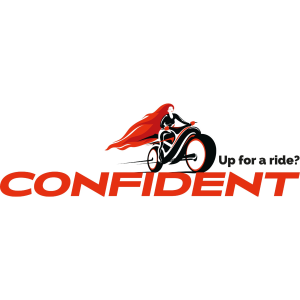Thomas Kolster, known as "Mr. Goodvertising," is a pioneering force in sustainable advertising. With over 18 years of experience, he has advised global brands on integrating sustainability into their strategies. Kolster's influential books, "Goodvertising" and "The Hero Trap," advocate for brands to create genuine, impactful change.
"Let me be clear, it is possible to live very well without hurting the planet. People simply need guidance. If we are to attract future talent and safeguard our industry’s legitimacy, we must address our image problem", says Thomas.
Thomas is one of the guest speakers at the third edition of Climate Change Summit, a comprehensive event dedicated to solutions for current and future climate challenges, taking place from October 15-17 in Bucharest (apply to attend).
We talk with Thomas next about purpose and profit, sustainability and creativity:
Having a Purpose vs. Profitability
Having a purpose, or being purposeful as a company, has become a shouting game or a commitment marathon. Much like Patagonia’s self-glorifying purpose, “We’re in the business to save our home planet,” versus health insurance company Discovery’s transformative promise, “Incentivizing people to live healthier.”
Patagonia’s purpose can quickly turn into a two-headed monster where one head shouts purpose and the other shouts profit. I’ve witnessed those monsters time and time again as most purpose statements end up being the lowest common denominator the whole board can agree on, like a biblical “Do good for people and planet.” Rather than a north star guiding the corporate direction and catalyzing future meaningful growth. When you ask, “WHO can you help people become?” you have a razor-sharp focus on change and Discovery has been successful at nudging people to live healthier. One study shows that their members exercise 4.8 times more per month than the average individual. This is also good for business, as it spells up to 30% lower hospitalization costs. Their stringent focus has made Discovery one of the most innovative health insurance companies. “WHO” anchors your brand's reason for existence in making a difference in people’s lives. It’s a shift from shouting “We believe in diversity” to instead getting people to fight their prejudices and biases.
Biggest Challenges
One of the biggest challenges today is the short-term focus in marketing and business in general. In the UK, the average CMO is in his or her chair for less than 2 years. How are we going to make sustainable change in just 2 years? And building brands with purpose takes time; it’s not just another marketing fad. The same can be said about CEOs, who are also challenged with shorter tenures. I always advise brands and agencies to make longer-term plans—at least a 5-year sustainability plan you can commit the brand towards. Impact takes time.
Authenticity vs. Purpose Washing
When every brand is pitching itself as Mother Teresa or Gandhi, who can be believed? Every brand can claim to have a big role to play in your life as their burning ‘why.’ But if you can’t see or feel the outcome, it’s another broken promise. What brand has changed your life for the better? Taught you something new? Made you healthier? Sparked new thinking?
I’ll argue we’re heading towards a post-purpose marketplace, where people are no longer buying what you make—or why you make it, but instead who you can help them become. It’s all about the difference you can make in someone’s life. When you feel a brand has enabled change in your life, it’s not just cheap words; you can feel the difference—and it becomes authentic.
Challenger brands have ample opportunities to bully the Goliaths of the industry. Most challenger brands can be built right from the beginning, from how they operate and govern to making the most sustainable product possible. Most big brands are like oil tankers; change takes time. This is where challenger brands can utilize the weaknesses of big brands and, through communication and positioning, attack those pain points. The early days of Oatly or Tony’s Chocolonely are a testament to this. That said, big brands do hold immense (and in many ways unjust) power in distribution, retail, etc., which makes it difficult for challenger brands to succeed.
Communicating Sustainability
Brands' long-term sustainability goals belong in reports and on a website, but very seldom in mass-market communication. Why should I care about a 10-year commitment from a company when I’m thirsty right now—and when the world is on fire? Think about how you can translate your long-term goals into a value-add here and now. And even better, if you can translate that into a value-add in terms of price, quality, and convenience. We know these principles work in marketing. Most brands fall into the trap of making sustainability a value crusade rather than delivering value. How do you see the evolution of collaboration between brands and NGOs in promoting social and environmental causes? What advantages and challenges do you think this collaboration brings?
Brands and NGOs have historically worked well together, and from a commercial perspective, cause marketing where brands use causes to push sales and raise funds for causes has been a widespread discipline for decades. In the last couple of years, more established partnerships between NGOs and brands have emerged as the issues become more complicated and closer collaboration is needed.
Creative Industries: friend or foe
The creative industry is guilty of not bridging the gap between brand messaging and consumer expectations. The sustainability agenda is not going away. Ask yourself how easy it is to choose a sustainable product. Or simply a product with lower carbon emissions compared to the category? Not easy, right? So, why aren’t more of us using our creative talents to help people understand the impacts of their shopping habits and lifestyles? In Denmark, like the rest of the Global North, people are buying too much stuff—or simply too climate-heavy stuff such as fast fashion, fast furniture, and cheap weekend flights. In Europe, the supermarkets are in an out-of-control discount war, where everyone will lose—from the supermarkets themselves to the farmers and other suppliers who can’t make a living. Let me be clear, it is possible to live very well without hurting the planet. People simply need guidance. If we are to attract future talent and safeguard our industry’s legitimacy, we must address our image problem. We are not lawyers or doctors, where we can lose our license. Yet, the impact we have on people’s behaviors, habits, self-esteem, dreams, and aspirations is unquestionable.
Marketing and Advertising Education
The industry is lagging in the knowledge needed on both the brand and agency side, which is a risk to our industry. We can’t take our license to operate for granted, and more and more countries are talking about banning advertising for certain products or industries. The UN Secretary-General António Guterres recently encouraged our industry to stop advertising fossil fuels. So far, there has been no qualified response from our industry.
Trends in Sustainable Advertising
Unfortunately, we’re witnessing a pushback against the sustainability agenda. In the US, the debate has become politicized, and states are banning or reversing the progress being made, such as on ESG reporting, renewable energy investments, or basic human rights. In the European Union, the tightening regulation has scared companies from investing or communicating around their efforts, and it’s more about compliance than anything else. There’s a real lack of engagement and innovation at a time when people could use a helping hand the most. Call it green-hushing if you will, but it’s bigger than just staying silent—as mentioned in the US, it’s become a war on values.
Sustainability in Romania
I have been coming to Romania for the last decade and have first-hand witnessed how businesses are maturing from viewing the climate emergency as a corporate social responsibility effort to a necessity and a business imperative. That said, there’s still some way to go for Romania, but that also opens up possibilities if done right. The country and its businesses can choose to develop in a sustainable direction and avoid the pitfalls that many other European countries have gone through in terms of intensive farming practices, fossil fuel investments, cutting down woodlands, etc. Romania can leapfrog these challenges and embrace a more sustainable mindset, circular thinking, and a renewable energy paradigm.



























